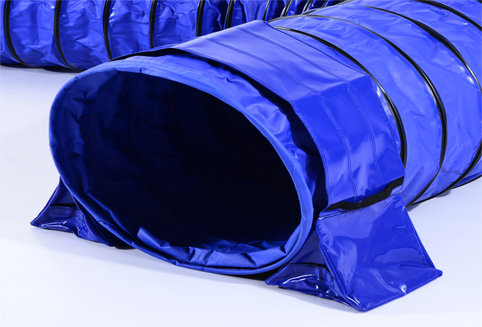E-mail: info@sp-vent.com
2021
Tips To Practice Agility At Home With a Dog
Tips To Practice Agility At Home With a Dog
You may have seen agility on TV, or you may have been lucky enough to participate in a local agility experiment yourself. No doubt you think it seems fun to play with your dog. All right, yeah! Dog agility is one of the fastest-growing canine sports in the United States because it's exciting, challenging, and fun.
Of course, an agility course is a good place to start. But maybe your dog is still a puppy, you're still receiving basic obedience, or you want to learn a little bit about things before you jump into the class. In this case, there are a number of things you can do at home to prepare the dog for agility barriers and assess your interest and enthusiasm for the activity. As an added bonus, even these basic skills can help build your dog's confidence, reduce his anxiety, increase his trust and introduce him to new experiences.
1. Ensure success
Unlike actions like "Leave It" or "Come," agile is just for fun. You don't have to stress about how long it takes your dog to learn these new skills. Start small and slowly raise your expectations and set yourself up for success. Some dogs may be prepared to go beyond basic principles within a few weeks, but others need a more patient approach.
Remember to offer encouragement and praise when your dog is successful.

2. Increase focus
Agile is a team sport. Without the guidance of his handler, the dog runs on the track without knowing the next obstacle. Despite the distractions and exciting environment, your agile dog must also learn to focus on you. By teaching your dog to make eye contact with you with cues like "look at me" or "look," you can attract more attention. Start with the most interesting places around you, and work your way up to more distracting locations.
3. Teach Tricks
Techniques allow you to improve training techniques, such as timing and reward placement. In addition, they can improve the dog's coordination and confidence, which can help improve agility. Certain techniques are especially useful for dogs. For example, teach your dog to touch your hand or target with his nose. You can move the dog or adjust its position by moving the hand or selecting the strategic target position. This comes in handy when teaching him to enter the contact area at the end of the agility barrier. Or try training your dog to walk backward. Backup teaches your dog basic body awareness, as he must pay attention to what all four PAWS are doing. Finally, teaching your dog to jump a hoop is a good introduction to tire jumping.
4. Develop flexibility
Techniques that increase a dog's flexibility are very useful for agility training. Spin will cause your dog to spin to the right or left and extend its sides. To start, you can use the new nose positioning technique to guide him into a circle. Bowing is a great way to lengthen a dog's back. Finally, consider teaching your dog to weave figure-of-eight on its legs. Tight turns are great for flexibility and are a good introduction to weaving with braiding rods.
5. Get the job done
Much of what happens in agility depends on how well the owner handles his or her dog. This includes sending the dog out in front, moving him from one side to the other, or having him work from a distance. Start by teaching your dog to work comfortably on either side of you.
Another introductory handling exercise is to teach your dog to move away from your left or right side. Try throwing things in the desired direction to help him get the basic idea that he doesn't need to be around all the time.
Finally, teach your dog to wrap the object (spin it tightly). This is a good base for turning around corners or between jumps. Use cones, buckets, or even trash cans to get your dog out of the object. Plastic works very well here. Reward any proximity to the object first, then gradually get your dog around and back.
+86 757 8881 8835
+86 159 2073 7023
+86 757 8881 8836
66 Funing RD., Fuwan Gaoming, Foshan China
Keywords: Flexible Duct, Heat Resistant Duct, Heat Resistant Duct, Movable Ventilator...
Copyright © Foshan Senpeng Ventilation Co., Ltd. All Rights Reserved Sitemap | Technical Support: 

